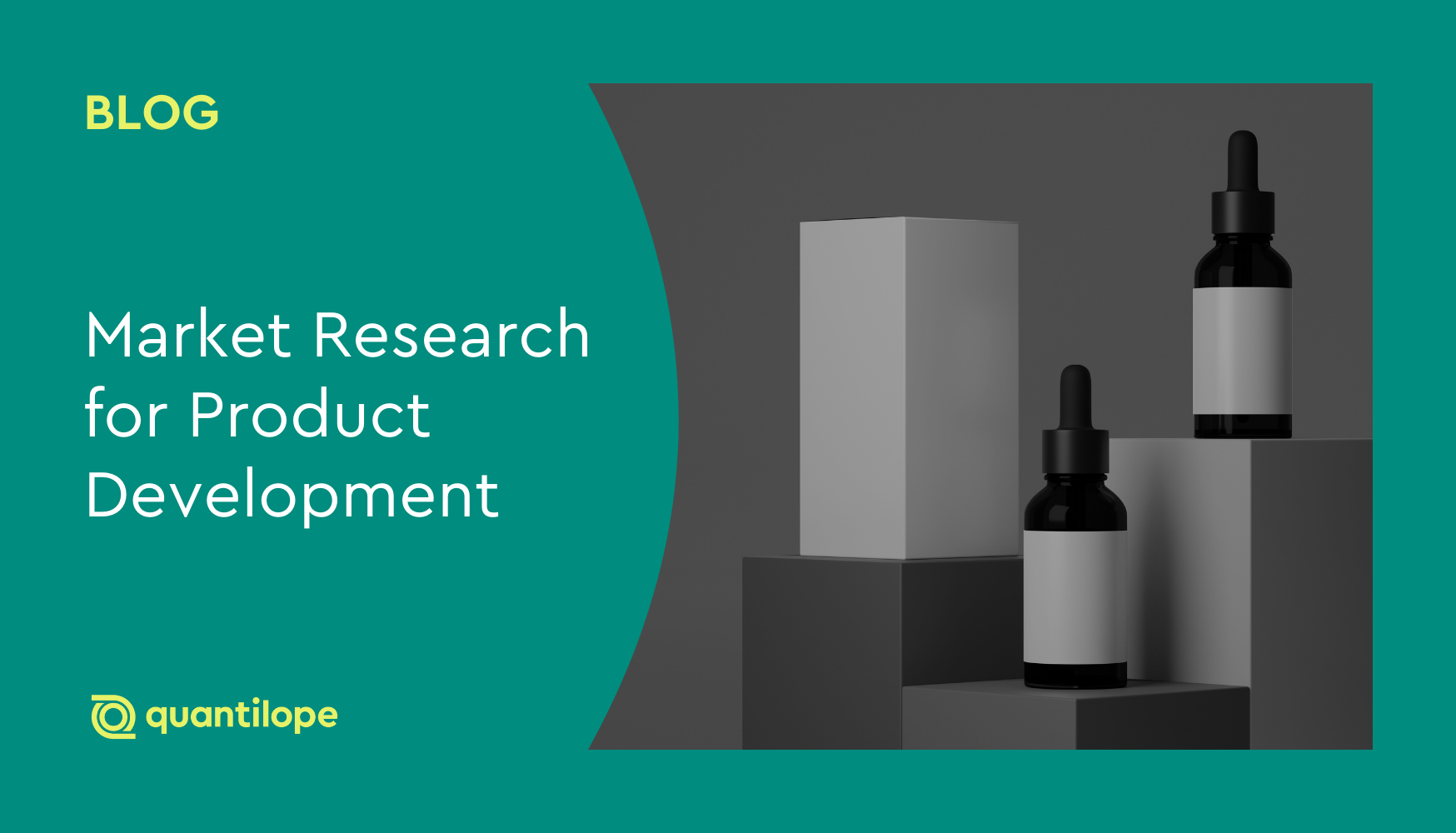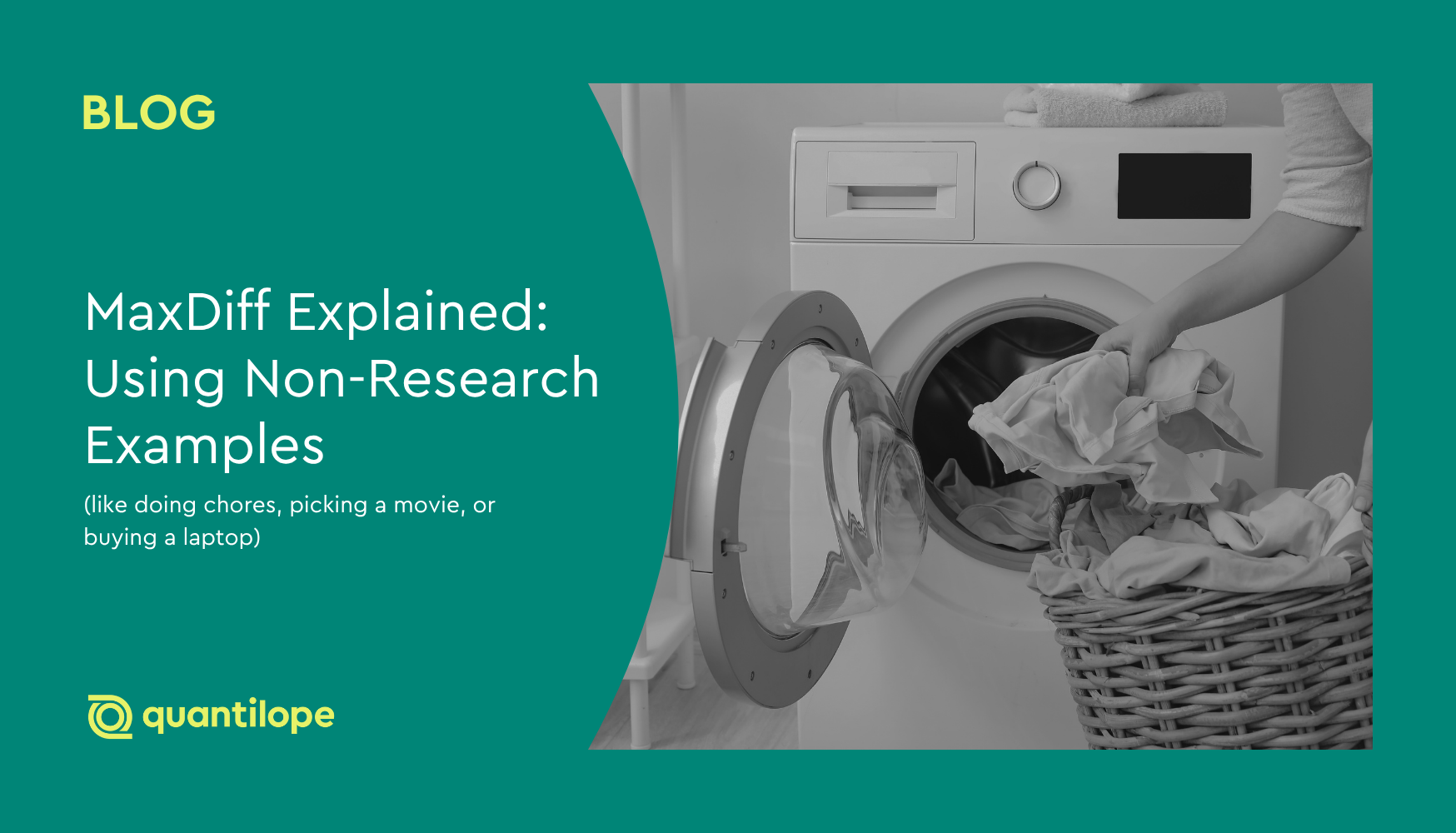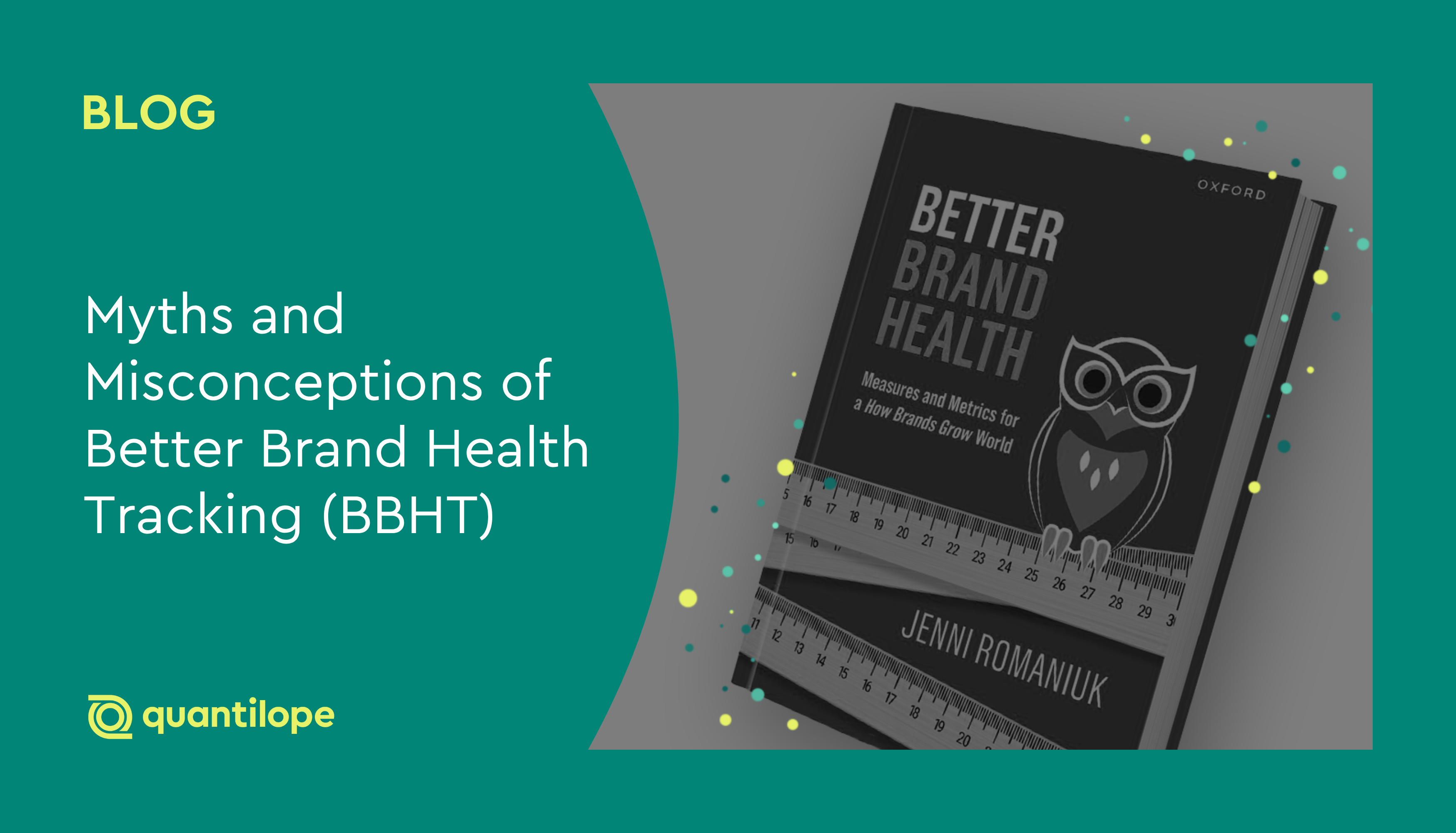In this blog post, we will see how the product development process should be guided by market research at every step for the best chance of success.
Table of Contents:
- Why is market research important for new product development?
- How to choose the best type of market research for your product
- How to conduct market research for a new product
- Optimize product development with automated market research
Why is market research important for new product development?
Tens of thousands of products are launched each year in the US, each destined for varying levels of success. If you’re considering improving an existing product, adding to a product line, or launching an entirely new one, it’s important to get your proposition right before you introduce it to the market. Your product stands a much better chance of getting stakeholder buy-in and hitting sales targets if it’s backed up by solid market research.
There are a few areas you’ll want to gather information on before going live with your new product:
-
The Market
- Is there a demand for the product?
- Is there room for it - what is the competitive space?
- What are the prevailing market trends that your product could capitalize on?
- How will your product need to differentiate itself from the rest of the category?
-
Product Users
- What are customer needs in the category?
- How do needs differ by various consumer segments?
- How are current needs being met; are there any needs gaps that your product could fill?
- Which existing pain points could your product eliminate for its potential users?
-
Business Proposition
- Which product concepts are most appealing to the target market?
- How should the product be positioned (versus other products in the category)?
- What should the price of the product be?
- How should the product be marketed and advertised?
- Which communication channels should you use to reach your target audience?
Gaining answers to the above questions will put you in a good position to understand the risks and opportunities of your product, as well as its overall viability.
Back to Table of Contents
How to choose the best type of market research for your product
Knowing the importance of market research, it’s also important to consider the various market research methodologies you might want to leverage.
Quantitative Research
Quantitative research methods interview respondents on a large scale to produce numerical data sets that can be analyzed for statistical significance and confidence levels. It deals in number-based facts and figures so that business decisions can be made based on the percentage of people who report a certain metric or say they behave a certain way. This kind of information is crucial when planning a new product, as you’ll need some firm numbers around questions like how many people show an interest in your concept, whether the market is increasing or decreasing in size, and how many consumers would be willing to spend money on your product.
Quantitative research is primarily done through online surveys, using a variety of methodologies. Questionnaires are sent to respondents (either through panel providers, social media, or your own list of contacts) for respondents to complete on their own time. In a product development survey, it would be wise to send your survey to a sample representative of the general population, unless you already know who your target consumers might be in terms of age, gender, household income, etc.
One great way to guide product development is to capture consumers' implicit feedback toward a proposed concept or idea:

Qualitative Research
Qualitative research is a more open-ended approach to gathering consumer views. It can be broad, covering any number of subject matters, but aims to go into issues in more depth than quantitative surveys, with a focus on the nuances of opinion and emotional dimensions of needs and preferences. The sample size for qualitative research is relatively small, as it is not subjected to the same kind of numerical and statistical measurements as quantitative research. The focus is on the nature and quality of the information, rather than quantity. In product development research, qualitative excels at providing the ‘why’ behind the ‘what’. It can be used after quantitative research to dive further into metrics that stood out in your data set or can be done prior to quantitative research to help set up the foundation of your quantitative study.
Qualitative research enables you to hear consumers speak in their own words. This not only helps identify unexpected issues or feedback but also creates a reference source to be used when crafting messaging for those consumers. Qualitative methods generally include depth interviews (one or two respondents being interviewed by a researcher) or focus groups (5-8 consumers debating an issue, led by a moderator). Depth interviews might also include an ethnographic element (watching and interviewing a respondent as they use a product in a real-life scenario).
In addition to quantitative and qualitative research (both forms of primary research), secondary research can be useful as a starting point for competitive analysis, or to complement primary research. Secondary research is when you use data that already exists to get information that will help in your product development. This might be information freely available in the public domain, such as government reports, or paid-for information provided by market intelligence agencies.
Back to Table of Contents
How to conduct market research for a new product
Define the problem
Research is most useful when the root of your problem or point of interest is well defined. If you know what you want to get out of the research (i.e. what the final report will look like and what information you want it to deliver), the end result will be far more valuable than a general, broad-based study.
Your objectives will depend on what stage you are at with new product development and your existing knowledge of the market. For instance, imagine you have an idea for a new hairstyling device. Your starting point could be any of the following:
-
Scenario A
You have no previous experience in the category, you have no idea what the device will look like, which consumer needs it will meet, or what the product’s benefits will be. You just have a feeling that there is room for a product that does something new in the world of hairstyling.
Research objectives: Understand current trends in the market and unmet consumer needs (both of these will act as inspiration for new product ideas).
-
Scenario B
You're a hair care and styling business and you already know that consumers have a need for a tool that helps them style their hair professionally yet quickly. In response to this, you have created 4 different product concepts.
Research objectives: Gain detailed reactions to each concept - including the pros and cons of each, understand current met/unmet needs in hair care, and use these ideas for refining the most appealing concept(s).
Identify the best research method
If you’re starting from scratch (like Scenario A), secondary research and qualitative research are great places to start. Secondary research can provide you with information like the size of your target market, demographics of potential buyers, sales figures in the category, and whether any similar products already exist. Qualitative research will provide rich information on consumer behavior (e.g. what they currently use to style hair, what their styling goals are, and the frustrations they have with current products).
Quantitative data can later be used once you’ve established a foundation using the above methods. Or, if you are already familiar with the industry and you already have concepts to test (like Scenario B), you can jump right into a quantitative study to gather numerical data (e.g. imagined usability, frequency of use, features, functions, color preference, etc.)
Generate ideas
If you don’t yet have ideas to test, use market research to brainstorm. Focus groups are a great way to spark debate around a category or product in terms of usage, perceptions, product winners and losers, and more. Focus groups are also great for asking respondents what their ideal product would look like and do for them that existing products don’t. This helps identify the potential USP (unique selling point) for your product. The ideas generated from focus groups provide solid guidance on which to base new product concepts for further testing.
Screen ideas
Once a number of ideas have been identified for further testing, you’ll need to decide how many to focus on and further refine. The chosen research methodology for this further refinement will depend on how many ideas you have and how developed they are.
Your ideas might simply be a paragraph describing each idea, in which case the conversational approach of qualitative research will help nail down which product features will give the product a competitive advantage. If the idea generation stage has produced specifics for each concept, you might be in the position to create detailed designs, in which case it could be possible to go straight to a quantitative survey to gain reactions through something like an A/B test. Note that if you have a lot of ideas (10+) and really don’t know which ones will resonate with your target audience, it’s worth first doing some further qualitative research to identify the strongest concepts before presenting them to a large sample in a quantitative study. That way, respondents don’t have to weigh too many alternatives and the data gathered will be more focused and actionable.
Fine-tune concept(s)
Following the first rounds of research, you will be in a position to refine and polish the concepts with the most potential. This will mean creating mock-ups, or, if possible, a well-developed prototype that allows respondents to test the product before it goes to market.
Usability testing is best for prototype interactions and is typically done with a smaller number of people for authentic, in-depth feedback. For a hairstyling device, this would look like individual usability tests watching consumers use the device to measure product performance and pitfalls. If you were testing something used by more than one person in a household - a car or TV, for example, you might want to gather all those individuals at once and interview them as a group.
Test pricing and marketing
Once the product design has been finalized, it’s time for the next phase of market research on commercial aspects such as pricing and marketing communications. Pricing expectations can be explored in earlier stages of research, but once you have a fine-tuned product you need to pinpoint the exact price level that will maximize sales. Secondary research might be useful in this stage to understand existing pricing within your product’s category. However, you’ll also need to present your unique product to the target audience and understand what they will actually be willing to pay for it. This is best done using quantitative pricing research methods, such as a Price Sensitivity Meter.
Together with price, various aspects of the marketing mix will also need consumer input. This will include package design, advertising assets, social media communications, and so on. Messaging needs to reflect consumer needs and language so that their interest is activated; this is where previous research comes into play - especially qualitative interviews. Target consumers‘ needs and styles of language that have been gathered in your product development stage can be helpful here for crafting language that is similar to the way they personally communicate.
Back to Table of Contents
Optimize product development with automated market research
quantilope’s automated online platform is equipped to tackle all stages of product development research, from initial idea generation to formulating and testing your final marketing strategy.
quantilope’s qualitative research solution, inColor, allows you to explore initial ideas and concepts through the use of participant video responses. Simply select your sample and send out video questions about any aspect of the category of interest - e.g. their existing behavior, what is missing from the market, or what their ideal product would be. inColor participants can demonstrate usage of existing products or product prototypes and provide feedback on concept ideas or marketing messages.
Meanwhile, quantilope’s quantitative tools will provide the numbers you need to get your product ready for the market. Online surveys exploring market demand will give you foundational statistics on which to build your idea. Advanced research methods like MaxDiff and Key Driver Analysis will boost concept testing by identifying the product features most important to your audience. Pricing methodologies such as Conjoint Analysis and our Price Sensitivity Meter establish which product profile and price point will garner the most interest and maximize sales. When you’re ready to take your product to market, A/B Tests can identify the right messaging and advertising creatives that are most likely to trigger a purchase.
To learn more about product development and how quantilope’s suite of quantitative methods, combined with quantilope’s inColor solution, can set you up for a successful product launch, get in touch below:




.png)